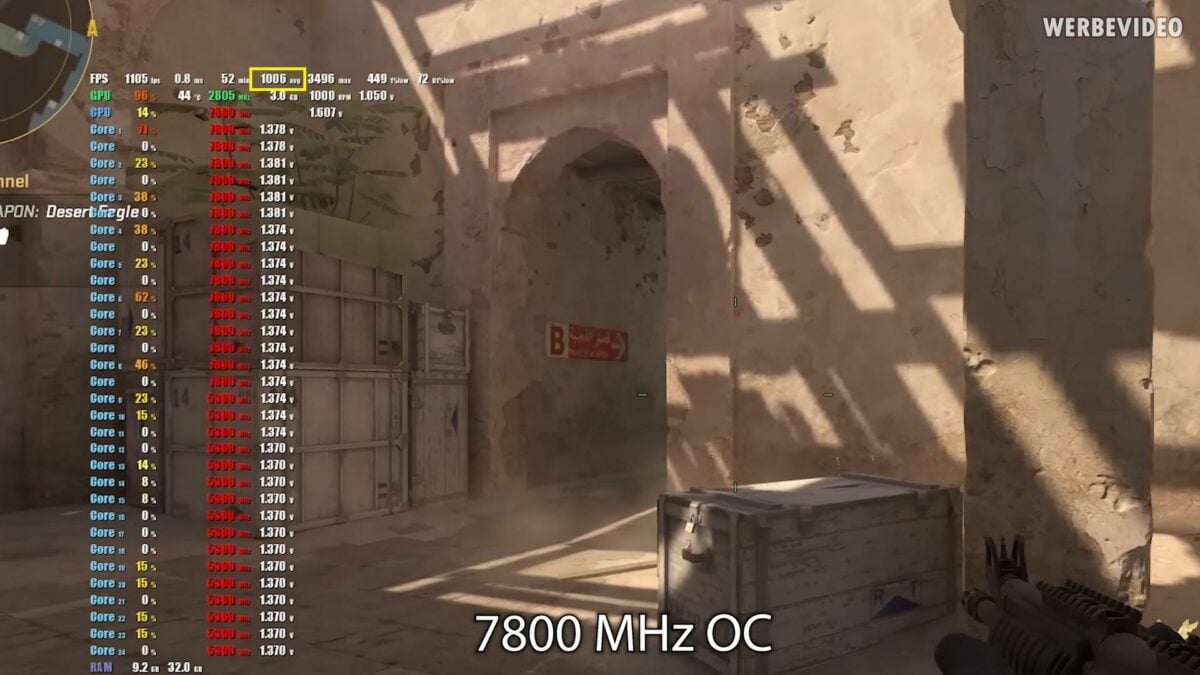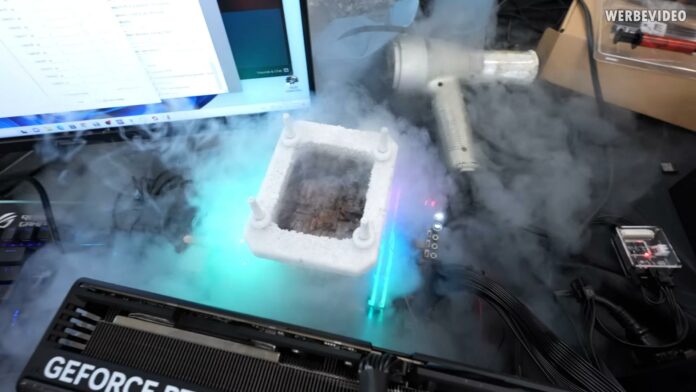YouTuber and overclocker der8auer has pushed Valve’s latest game above 1,000fps. This was possible with some help from extreme cooling and Intel processor’s high-frequency potential.
During an overclocking session starring one of the best CPUs around, the Intel Core i9-14900K, der8auer took some time to test up Counter-Strike 2. Using an Asus ROG Maximus Z790 Apex Encore motherboard and a 7.4GHz CPU OC, the game was able to spit out above 1,000 fps, with an average of around 956 fps.
To reach 1,000 fps on average, der8auer needed a binned CPU. This is a high-quality chip with higher overclocking potential selected among hundreds or thousands of CPUs. With such chip on hand, Korean overclocker Safedisk helped push frequency to 7.8GHz on the P-cores and 5.5GHz on the E-cores at 1.65V Vcore.

As usual, when the story is about high-framerate gaming, you can bet the best graphics card is involved. In this instance, you guessed it, it’s the RTX 4090. But that’s not enough, the game had to be run at 1080p resolution with esports settings. Unexpectedly, these settings include some high options such as shadow, which is useful to see enemies’ silhouettes before they cross a door for example. In other words, the game could technically deliver even higher fps than what der8auer has managed.
For reference, this is nearly double the refresh rate of the fastest gaming monitor available: the Asus ROG Swift Pro PG248QP 540Hz display. Funnily enough, the monitor’s price is also nearly £1,000, and that’s for a 1080p resolution. We can’t even dream about such a speed at QHD and above just yet, nor consider the higher processing and bandwidth requirements.
Lastly, if you are wondering how much you could possibly get using a reasonable liquid cooling solution, the answer is 800fps on average at 6GHz. All that’s left is to wait for panel and sustainable cooling technology to catch up.

